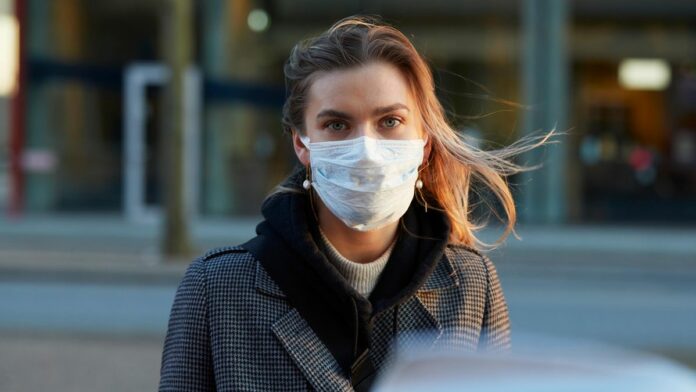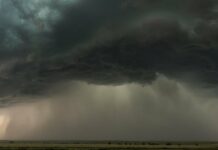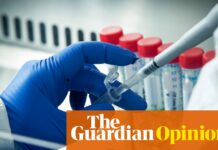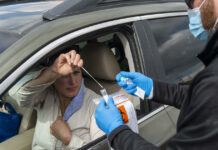
NEW YORK, NEW YORK – MAY 31: A woman wearing a mask poses on May 31, 2020 in New York City. … [+] Government guidelines encourage wearing a mask in public with strong social distancing in effect. (Photo by Alexi Rosenfeld/Getty Images)
Getty Images
As states reopen amid the ongoing Covid-19 pandemic, many are documenting still-rising levels of new cases. This is partly, or largely, due to bad pandemic-time behavior—that is, not wearing masks and not social-distancing. Even in New York, which has done so well in reducing its numbers, people are getting weary and a little sloppy with protections. A new study out in the journal Proceedings of the National Academy of Sciences finds that among all the strategies for reducing transmission, wearing a face mask may be the central variable that determines the spread of the virus.
“Our analysis reveals that the difference with and without mandated face covering represents the determinant in shaping the trends of the pandemic,” the team, from Texas A&M University, the University of Texas at Austin, California Institute of Technology, and the University of California San Diego, write in their new paper.
They analyzed the various mitigation measures put in place in the three major centers of the outbreak—Wuhan, Italy, and New York City—from January 23 to May 9, 2020. The team also looked at the slopes of the curves representing the number of cases, and how they changed after each measure was mandated. For instance, in NYC, the stay-at-home and social distancing orders didn’t do a lot: the curve really started to change after masks were mandatory. (See the figure below.) Compare that to the U.S. overall, which never put in place a face-covering policy.

Daily new confirmed infections in (A) NYC and (B) the United States. The dotted lines represent … [+] linear fitting to the data between April 17 and May 9 in NYC and between April 4 and May 9 in the United States. In B, the number in NYC was subtracted from that in the United States. The vertical lines label the dates for social distancing, stay-at-home orders, and mandated face-covering.
Zhang et al 2020, courtesy PNAS
And in Wuhan, the response was not only swift, but multiple measures—namely, social distancing, lockdown, and face coverings—were put in place simultaneously. In the U.S., it was slower, and importantly, sequential, making it much less effective. “[T]he response to the pandemic was generally slow in the western world, and implementation of the intervention measures occurred only consecutively,” the authors write. “Clearly, the responsiveness of the mitigation measures governed the evolution, scope, and magnitude of the pandemic globally.”
The team also looked at how the virus, in droplets and aerosols, travels in the air; how fast it travels; the weather conditions in the respective geographic locations; the “dose” and effectiveness of how it infects the respiratory system; and other variables. “Our results clearly show that airborne transmission via respiratory aerosols represents the dominant route for the spread of COVID-19,” said study author Renyi Zhang in a statement.
When paired with the data on how the curve changed in response to the mitigation methods, this all makes sense—the takeaway being that face masks are likely the major determinant of how the infection spreads or slows.
“Our study establishes very clearly that using a face mask is not only useful to prevent infected coughing droplets from reaching uninfected persons, but is also crucial for these uninfected persons to avoid breathing the minute atmospheric particles (aerosols) that infected people emit when talking and that can remain in the atmosphere tens of minutes and can travel tens of feet,” said study author Mario Molina in a statement.
Indeed, a study last month in the same journal showed that just talking loudly in a room released droplets that lingered in the air for eight to 14 minutes. The new study also echoes the update made by the CDC recently, stating that while transmission by infected surfaces (e.g., touching a doorknob that a sick person coughed on) was possible, it’s not the main route of infection—air is.
Interestingly, the team also calculated how many people were likely spared from infection by wearing face coverings. “By analyzing the pandemic trends without face-covering using the statistical method and by projecting the trend, we calculated that over 66,000 infections were prevented by using a face mask in little over a month in New York City,” said Zhang. In Italy the number was 78,000. “We conclude that wearing a face mask in public corresponds to the most effective means to prevent inter-human transmission. This inexpensive practice, in conjunction with social distancing and other procedures, is the most likely opportunity to stop the COVID-19 pandemic.”
As states continue to reopen and many see steady rises in infection rates, they should heed the message in the findings of studies like this one.
Finally, the researchers make the important point that science must be the foundation upon which pandemic policy is based. It’s unfortunate that we live in a time where this point has to be made, and repeated, but here we are. They write that “sound science should be effectively communicated to policy makers and should constitute the prime foundation in decision-making amid this pandemic. Implementing policies without a scientific basis could lead to catastrophic consequences, particularly in light of attempts to reopen the economy in many countries.”






